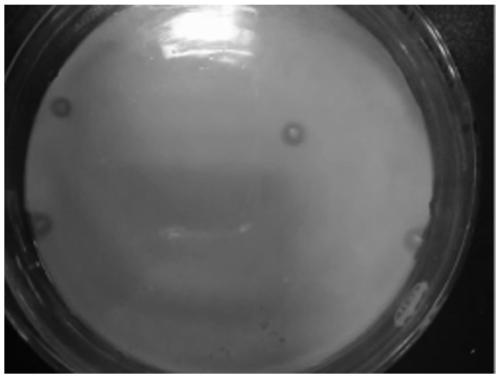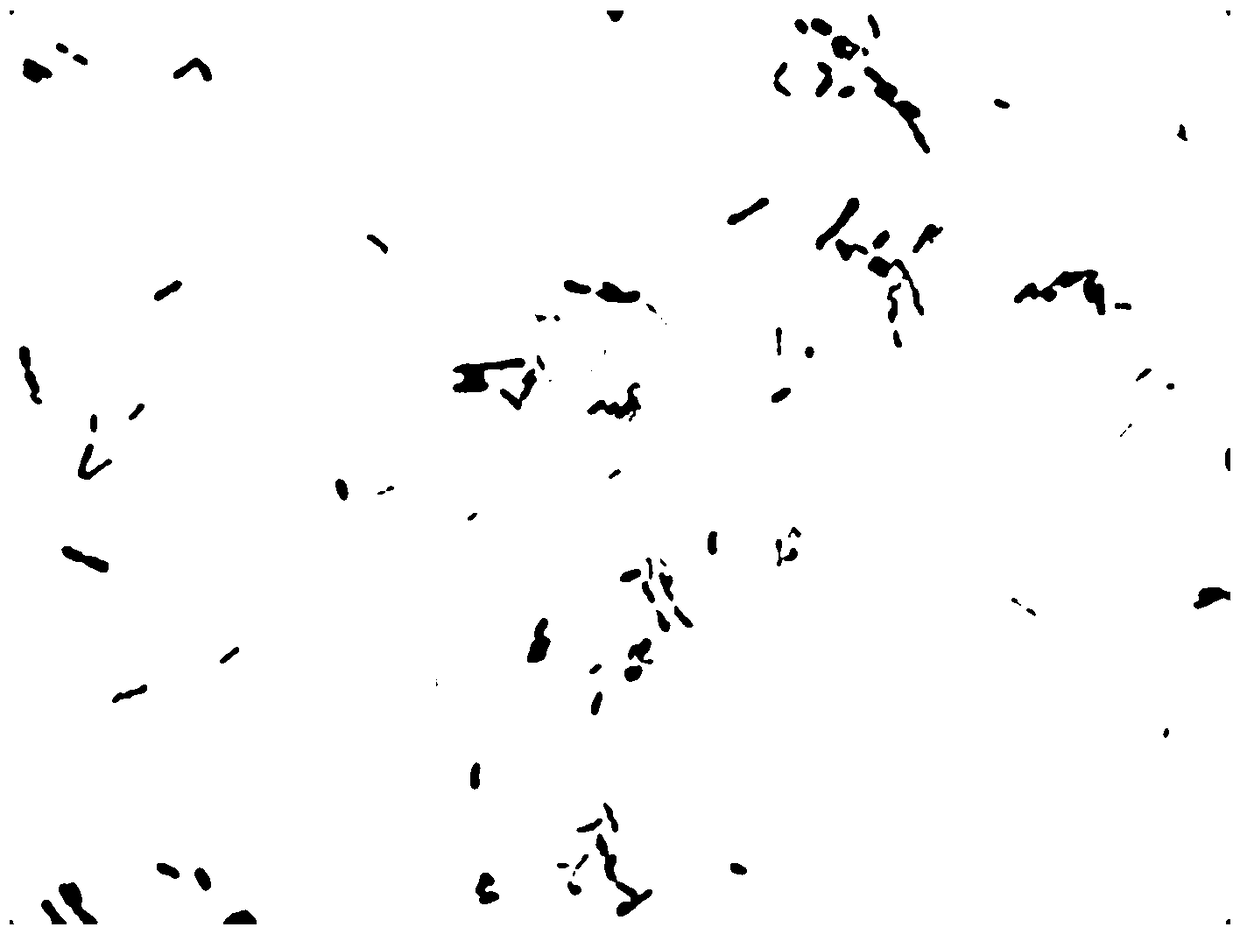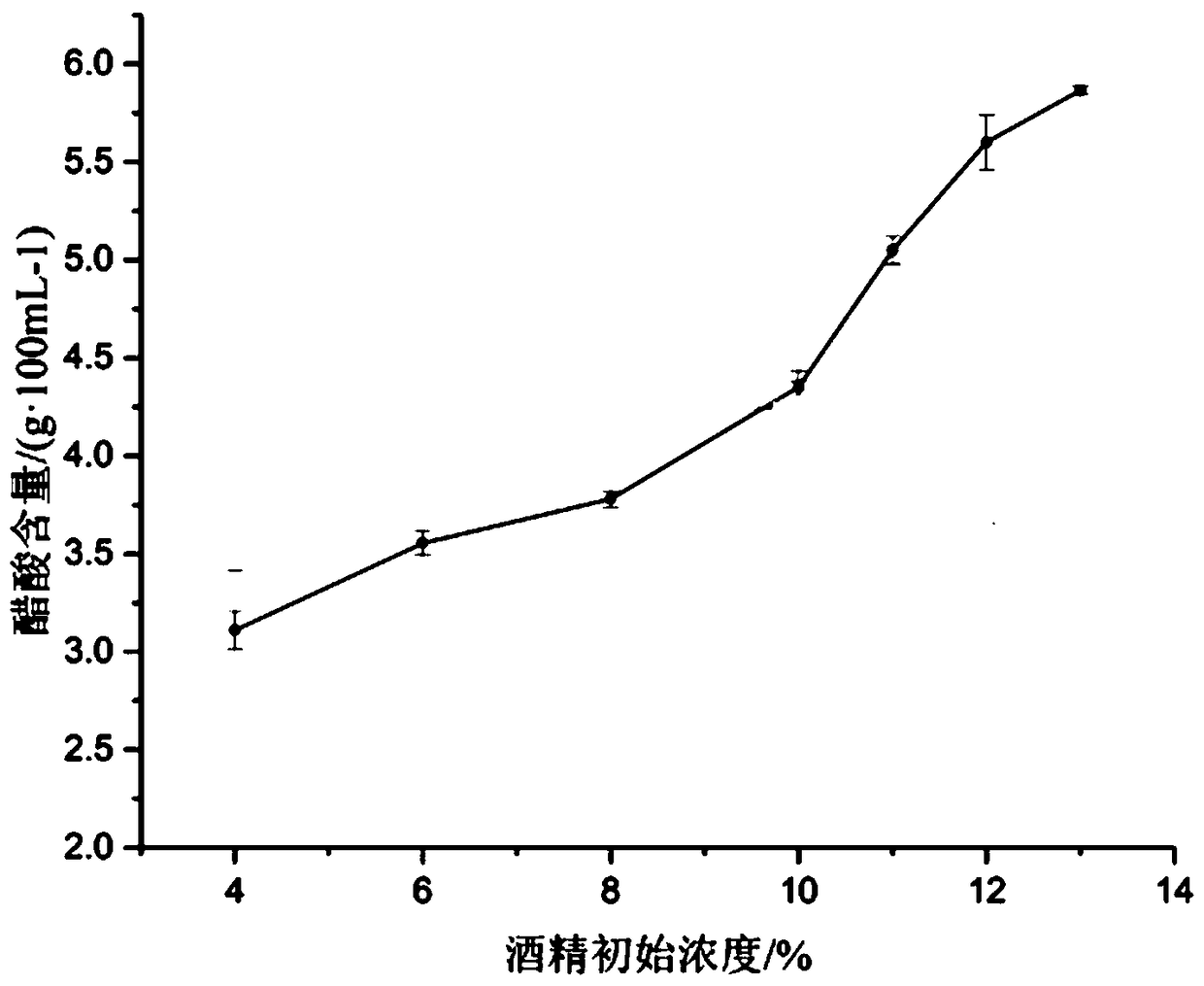Ethanol-tolerant acetic acid bacteria and application thereof
A technology of ethanol acetic acid bacteria and ethanol acetic acid, which is applied in the preparation of bacteria, vinegar, microorganisms, etc., can solve the problems of cost increase and product quality cannot be guaranteed, and achieve the effects of cost saving, good flavor and improved use efficiency
- Summary
- Abstract
- Description
- Claims
- Application Information
AI Technical Summary
Problems solved by technology
Method used
Image
Examples
Embodiment 1
[0026] Example 1: Ethanol-resistant acetic acid bacteria ( Acetobacter pasteurianus ) Separation of NF-171
[0027] (1) Enrichment culture: pipet 1mL Nanfeng mandarin fruit vinegar aging puree into a 250mL Erlenmeyer flask containing 50mL enrichment culture solution, culture for 3d in a shaker at 30℃, 150r / min, and select acetic acid For the Erlenmeyer flask for the next step of bacterial isolation.
[0028] (2) Separation and purification of strains: take 1 mL of enriched culture broth and dilute to 10 -6 ~10 -8 Concentration, spread in the primary screening petri dish, placed in an incubator at 30°C for 3 days. Observe the cultivation situation every day and record the situation of the transparent circle. Choose a strain with a large transparent circle.
[0029] (3) Re-screening of strains: the strains obtained in the initial screening are subjected to shake flask liquid culture (10% absolute ethanol is added to the medium) for re-screening, cultured at 30°C, 150r / min for 3 day...
Embodiment 2
[0030] Example 2 Identification of acetic acid bacteria
[0031] (1) Morphology of strain NF-171, physiological and biochemical tests to identify acetic acid bacteria refer to Bergisan Bacterial Identification Manual (Eighth Edition). (Table 1)
[0032] (2) 16Sr DNA identification: (Supplementary DNA extraction, PCR operation data)
Embodiment 3
[0033] Example 3: Ethanol resistance test
[0034] The high acid-producing acetic acid bacterium Acetobacter pasteurella NF171 and Acetobacter pasteurella NF172, which were screened through the quantitative acid production experiment, were activated at 32°C, 150r / min shaking culture (22±2) h, and then inoculated with ethanol content of 4 In %, 6%, 8%, 10%, 12% (v / v) acid-producing medium, cultured with shaking at 32°C and 150r / min for 72h to determine acid production. Under the same conditions, determine the acid production of the strain as image 3 Shown.
PUM
 Login to View More
Login to View More Abstract
Description
Claims
Application Information
 Login to View More
Login to View More - Generate Ideas
- Intellectual Property
- Life Sciences
- Materials
- Tech Scout
- Unparalleled Data Quality
- Higher Quality Content
- 60% Fewer Hallucinations
Browse by: Latest US Patents, China's latest patents, Technical Efficacy Thesaurus, Application Domain, Technology Topic, Popular Technical Reports.
© 2025 PatSnap. All rights reserved.Legal|Privacy policy|Modern Slavery Act Transparency Statement|Sitemap|About US| Contact US: help@patsnap.com



